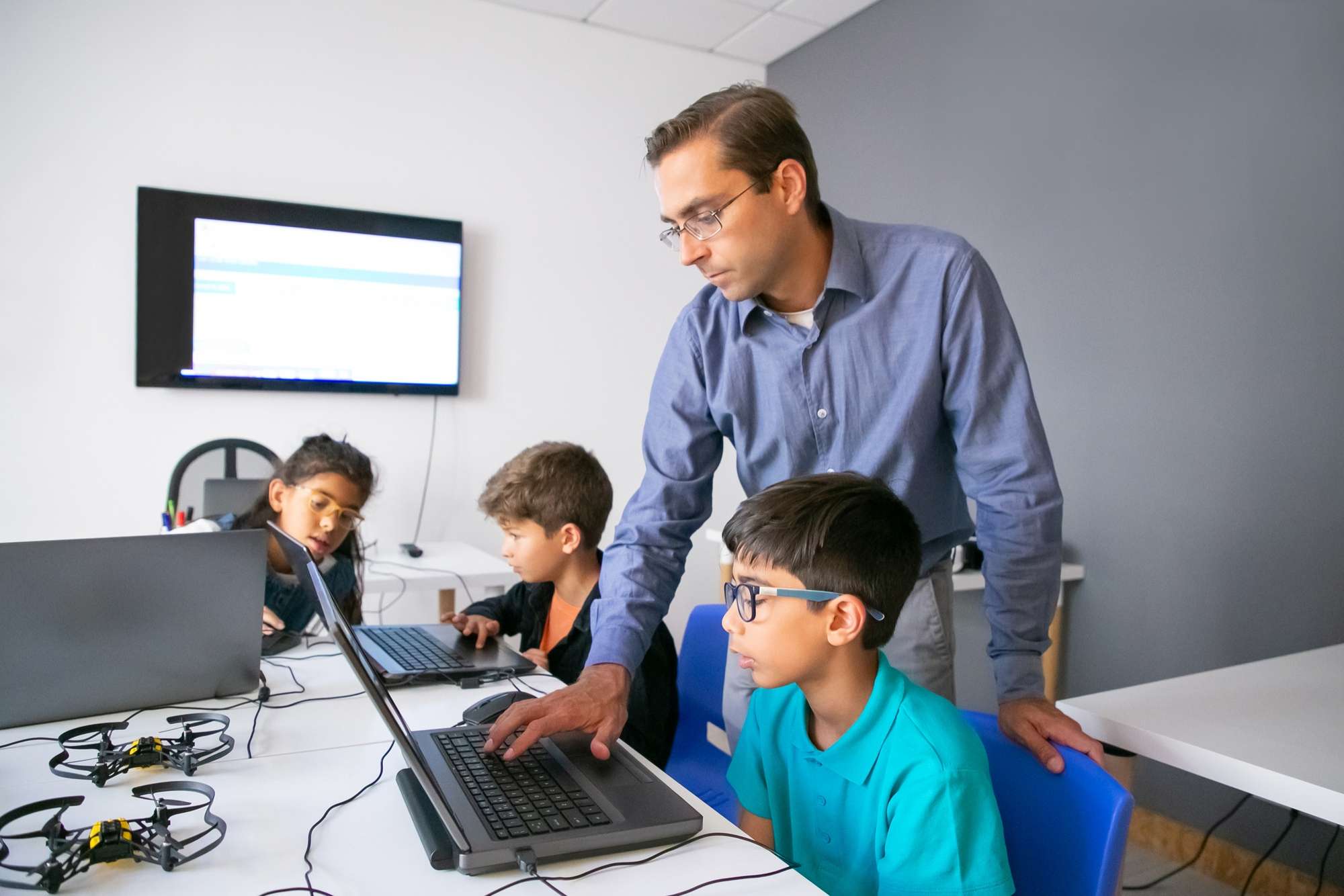We have all villainized technology and its effects on our kids at least once in our lifetimes. Whether it is about them spending too much time on the phone or playing too many games on the computer, one thing is certain– technology can be potentially distracting for a school-going child. But does that mean the technology is always bad?
Note the key factor here, just like anything else, adding too much of it can often overpower the benefits of technology too. Of course, your school-aged child shouldn’t be using technology excessively. But the educational benefits of technology are vast, and you should ensure they don’t miss out on that completely!
The 5 Benefits of Technology in Education
Technology has revolutionized education by providing innovative tools and resources that enhance the learning experience. By harnessing the power of technology from interactive digital platforms to online collaboration tools, educators can create dynamic classrooms. Ultimately, technology empowers students to become active learners and prepares them for the challenges and opportunities of the digital era.
- Student Engagement and Participation
Technology enables educators to create interactive learning experiences that actively engage students. Through multimedia content, gamified activities, and virtual simulations, students can engage more in their learning process, enabling a deeper understanding of the topic and retention of information. - Access to Information and Resources
With technology, students have instant access to a vast amount of information and educational resources. Online databases, e-books, educational websites, and video lectures provide students with diverse perspectives that let them explore beyond traditional classroom resources. - Personalised Learning Experiences
Technology allows learning experiences tailored to individual student needs and styles. Adaptive learning platforms, intelligent tutoring systems, and learning management systems provide personalized feedback, assessments, and learning paths to help students learn at their own pace. - Collaboration and Communication Skills
Through online platforms, students can engage in group projects, share ideas, and collaborate with peers from different locations. This enhances their communication skills, promotes teamwork, and exposes them to diverse perspectives that prepare them for future collaboration in the digital age. - Technological and Digital Literacy
Integrating technology in education equips students with the necessary skills to navigate digital tools, critically evaluate online information, and responsibly utilize technology. These skills are crucial for success in higher education and future careers in this technological world.
Addressing Your Technological Concerns
As parents, you are not wrong to have valid concerns regarding technology use, particularly when it comes to education. It is only by proactively addressing concerns related to screen time, online safety, and the digital divide that educators and parents can create a safe technological environment for students. This enables them to make the most of technology’s benefits while ensuring their overall well-being in the digital world.
- How to find the balance between screen time and offline activities?
It is crucial to find a balance between screen time and offline activities to ensure a well-rounded
educational experience. Encouraging a healthy lifestyle with physical exercise, outdoor play, and hobbies can complement technology use. Setting screen time limits, technology-free zones, or designated offline hours while increasing face-to-face interactions can help strike the right balance. - What to do to ensure student privacy and online safety?
Safeguarding student privacy and online safety is of utmost importance. Teachers and parents should educate students about online privacy, safe internet practices, and responsible digital behavior. Implementing strict privacy policies, using secure platforms, and understanding parental controls can help protect students’ personal information and ensure a safe online learning experience. - What measures are taken to address the digital divide among peers?
The digital divide refers to unequal access to technology and internet connectivity. To address this concern, schools provide devices or access to technology centers for students who lack resources. Schools like TGAA also leverage mobile technology to reach every student and parent. Collaboration between schools and parents is crucial to ensure equal access to technology for all students.
Conclusion: Embracing Technology as an Educational Tool
As we navigate the ever-evolving landscape of education, let us embrace technology as a powerful tool that enriches teaching and learning experiences. By leveraging its potential and ensuring responsible and balanced use, we can equip students with the skills, knowledge, and opportunities they need to thrive in a rapidly advancing world.
With technology as our ally, let’s collaborate as parents and educators to empower the next generation for success.

